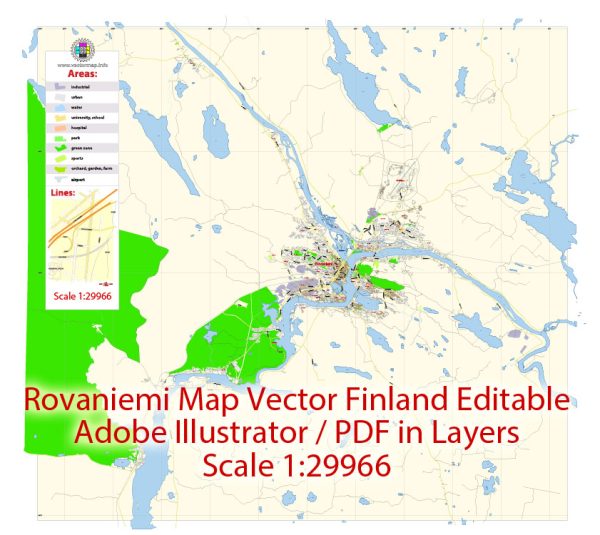General overview of the business and economic development in Rovaniemi, Finland.
Rovaniemi is the capital of Lapland, the northernmost region of Finland. It is known for its location on the Arctic Circle and as the official hometown of Santa Claus. The city has a mix of traditional industries, such as forestry and mining, as well as a growing emphasis on tourism and services.
- Tourism: Rovaniemi has experienced significant growth in tourism, particularly due to its association with the Christmas theme and the Santa Claus Village. The city attracts visitors from around the world, especially during the winter months when tourists come to experience the Northern Lights and winter activities. The tourism industry has had a positive impact on the local economy, creating job opportunities and fostering the development of related services.
- Arctic Expertise: Finland, in general, has been focusing on leveraging its expertise in Arctic technology and know-how. Rovaniemi, being situated in the Arctic Circle, has the potential to become a hub for Arctic-related research and development. The Arctic Centre, located in Rovaniemi, plays a significant role in promoting Arctic studies and research.
- Education and Research: Rovaniemi hosts the University of Lapland, contributing to the city’s academic and research environment. The university’s focus on Arctic studies aligns with the region’s emphasis on Arctic expertise and sustainable development.
- Transportation and Logistics: Rovaniemi’s strategic location makes it a key transportation hub, and its infrastructure supports the movement of goods and people. The city’s airport, in particular, facilitates connections with other parts of Finland and international destinations.
- Traditional Industries: Forestry and mining have historically been important industries in Lapland, contributing to the regional economy. While these industries may not be as dominant as in the past, they continue to play a role in the local economy.
It’s important to note that economic and business development can be dynamic, influenced by various factors such as global economic trends, government policies, and technological advancements. For the latest and most accurate information, it’s recommended to refer to local business reports, government publications, and official statistics from more recent sources.


 Author: Kirill Shrayber, Ph.D.
Author: Kirill Shrayber, Ph.D.